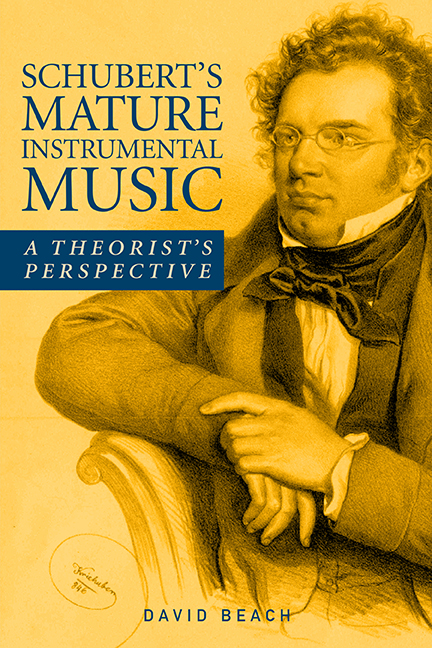5 - Three Scherzo Movements
Published online by Cambridge University Press: 10 June 2021
Summary
A scherzo movement consists of three parts: scherzo–trio–scherzo. In this chapter we will be examining the scherzo portions of three movements in detail from the perspectives of formal design and voice-leading structure. The trios, which offer foils to the scherzi, will be discussed, but without accompanying graphs of their voice-leading structures. The three movements, which differ in their instrumentations and character, are the following: (1) the third movement of the Piano Sonata in A Minor, D. 845, written in the early months of 1825 and published that autumn as op. 42 with a dedication to Archduke Rudolph of Austria; (2) the third movement of Schubert's last and most famous chamber work, the C-Major String Quintet, D. 956 (1828), which was first performed publically at the Musikverein in Vienna on November 17, 1850, and published three years later as op. posth. 163; and (3) the third movement of the C-Major Symphony, D. 944 (“The Great”) which was written over a four-year period, 1825–28, and first conducted by Felix Mendelssohn at the Leipzig Gewandhaus on March 21, 1839.
The formal design of a scherzo is designated as ||: A :||: B Aʹ :||, traditionally referred to as rounded binary form, “binary” because it consists of two parts that are repeated and “rounded” because of the return of A, normally with a concurrent return to I, in the second part. However, from the perspective of the voice leading, which does not account for the repeats of parts 1 or 2, the underlying design is ternary: A B Aʹ. The formal design of the scherzo movement from the C-Major Symphony, D. 944, is an expansion of this basic scheme, that is, sonata form. From the perspective of Schenkerian voice-leading structure, the first two parts of the form, A and B, are united by the interruption of the fundamental structure (and its subsequent prolongation in movements in the major mode), and the final portion completes the motion to closure. This can be demonstrated as follows:
From the perspectives of formal design and underlying structure, there is nothing that distinguishes these movements from scherzos by, say, Beethoven or Mendelssohn. What identifies them as Schubert is his distinctive harmonic language, particularly as revealed in D. 845, and their character, especially in the trio of the C-Major Quintet.
- Type
- Chapter
- Information
- Schubert's Mature Instrumental MusicA Theorist's Perspective, pp. 99 - 123Publisher: Boydell & BrewerPrint publication year: 2017

